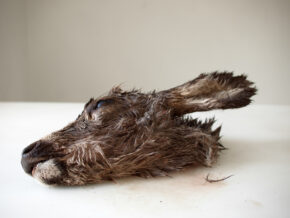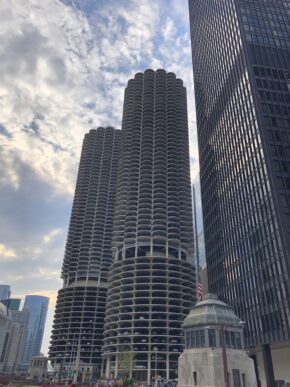The rainfall was relentless, like a Kenyan endurance runner. The windshield wipers were working hard, and I hoped my friend’s brakes were new. (I also hoped he wasn’t impaired by the two huge whiskeys I watched him down at the Irish bar we just left.)
Only in New York City can it take so much bloody time to go from one village to the next. (In this case, West to East.) I was late, so I was a bit anxious. The whole plan was my idea, and now I was the one mucking it up.
We were en route to Cooper Union, where I was to meet up with my photo buddies Richard and Jaime. Two more intelligent, menschy guys, you’d never expect to meet. As soon as we arrived, I skidded out of the Honda Pilot and dashed across the street. (Only to realize I was in the right spot a moment earlier. Look before you leap into traffic, I always say.)
Our destination was a lecture by the super-duper Art Star Francis Alÿs, who’s from Belgium but based in Mexico City. (Just because someone is super-famous in the Art World doesn’t mean you’ve heard of him.) As I’ve said before, your lowest-IQ Reality TV Star would likely have a larger Twitter following.
But I had heard of him, and had seen a few of his videos online. The Lord only knows how much he charges for his limited edition pieces, repped by David Zwirner and shown at MoMA, but it’s all online for free.
Think about that. In an Art World replete with private vaults, this dude puts it out there for all of us. I’d seen a video where he’s accosted by neighborhood dogs in rural Mexico, one where he set a fox loose in a Museum at night, and the renown piece where he dragged a block of ice behind him until it melted to nothing. He also dashed into a dust-storm/mini-tornado in the name of art.
Great stuff.
As I mentioned previously, though, I mucked up the plan. I told Richard it started 30 minutes after it did, so he waited in the lobby for me while it all got started. Jaime, not privy to that round of texting, got a good seat right in center.
Richard and I? We had to sit on the cold concrete floor, with obstructed views, dripping our rain-soak all over ourselves. It was murder on our posteriors, so time was never going to be unlimited. 20 minutes max. Fortunately, we got lucky.
The talk was so casual, the searching for digital video files on his laptop so comical, I couldn’t believe this guy was as important as he is. Very distracted-professor sort of vibe. But he did exude a niceness, it should be said.
He mostly just played videos one at at time on his computer. Two of them were so good, I had to deviate from writing about photobooks to show them to you. (And to re-iterate, the rest of his work is free to view on his website.)
Both pieces were made in Afghanistan. Much is being made these days of European artists making “art” about war zones. (i.e. Richard Mosse in the Congo.) Personally, I think it’s great when artists try to make content out of genuinely important subjects. Or in dangerous places.
But Art, at it’s core, is about transformation. And news is about documentation. No one has written more about the 21st Century blurred lines than I have, but I’ve begun to contemplate the differences between the now-morphed traditions.
This video, from his Children’s games series, shows a phenomenon Mr. Alÿs observed when he was doing his research. Kids rolling tires with a stick. A practically ancient way to amuse oneself. (Richard mentioned seeing it in this painting by Bruegel.)
The video is cheeky and fun. Thoughtful for sure. But it’s a document of something that was already happening. It’s first level reproduction. I see something. I capture it. It is depicted.
From that, Mr. Alÿs said, he imagined “Reel-Unreel.” It is longer, and I saw only an excerpt. But I practically stopped breathing. You’re in Kabul. It feels like you’re there with the camerawork. Some screen text says that when the Taliban took over, they tried to eradicate the films in the National Archive. Burn them.
Some people fooled them into thinking they got the master sets, but those had been moved. (That text is at the end of the video we’re showing.) So the boys in the “created” video roll a cinema reel through the dirt streets. You can almost smell the truck exhaust. Eventually, one of the reels falls over a cliff.
I forgot about my soggy pants, and uncomfortable ass. I was transported somewhere else. It was a captivating couple of minutes. And that’s why I’m writing about it a month later.
Great art distills. It catalyzes one idea into another through symbolism and craftsmanship. It’s not direct, like documentation. That’s a strength, I think, when it’s done right. Our subconscious speaks in symbols through our dreams. Art, therefore, can circumvent the intellect.
It’s why I love it so much, especially the best of it.
To be clear, it’s not impossible for documentary work to do that. Just much harder. Literality is for lawyers, after all.

